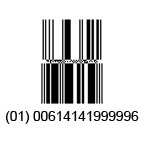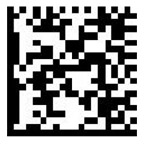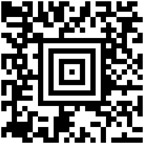There are hundreds of different kinds of barcodes out there, and it's not easy to read between the parallel lines. Choosing the right one to use can be a daunting task. In this blog, we’ll explain the most common barcode symbologies. So you will be better equipped to choose the best one for your application.
Barcode Types
The bars and spaces in a barcode are grouped in such a way to represent a specific character. The interpretation of these groups is based on a particular set of rules called a symbology. Symbologies are the languages of barcodes. Each symbology has its own key to translate it. There is a wide variety of barcode symbologies, but only a small percentage are in use today. Some symbologies were designed for different industries and applications. Each has unique characteristics that appeal to different users. You need to pick a symbology that works with your software, barcode scanner, and printer. You also must consider the barcode format and amount of data to be encoded. When space is available, Code 39 and Code 128 are the most common barcode types for implementing most barcode systems. You can test out how some of these symbologies will look with your data. Use our free barcode generator.
Linear or One-Dimensional (1D) Barcodes
A linear, one-dimensional barcode is like a license plate. The numeric digits on a license plate by itself don't tell you anything. You use the number to search the DMV’s database for information about the vehicle and owner. A linear barcode is simply a key to find specific information in a database, and all of the barcode labels in the world are keys to information in databases in any business that uses product identification numbers, from the automotive industry to retail industry and beyond. Code 39 is the most frequently used 1D barcode in industrial applications today. It is a variable-length alphanumeric code. The Code 39 barcode uses four special characters: $, /, +, and %. Those can pair with alphanumeric characters to extend to the full ASCII character set.
Code 128
Of all the common linear symbologies, Code 128 is the most flexible. It supports both alpha and numeric characters easily. It is also variable length. Code 128 has the highest number of characters per inch. It is 20-30% smaller than Code 39. Code 128 is the most easily read barcode. It also has the highest message integrity because of several separate message check routines.
UPC
UPC (Universal Product Code) is the most common barcode for retail product labeling. It is seen in most grocery stores across the United States. The symbology encodes a 12-digit numeric-only number. The first six digits are assigned by the GS1 US. The next five digits are assigned by the manufacturer. And the final digit is a modulo 10 check digit.
EAN/JAN
The EAN/JAN (European/Japanese Article Number) is similar to UPC, but encodes an extra digit or two. The extra digits may represent a country code. The code 00-04 and 06-09 are assigned to the United States.
GS1 DataBar (RSS)
GS1 DataBar symbols hold more information in a smaller code than a UPC/EAN barcode. It was originally called RSS (Reduced Space Symbology). GS1 DataBar enables GTIN identification for variable measure and hard-to-mark products like fresh produce, jewelry, and cosmetics. GS1 DataBar can also carry GS1 Application Identifiers such as serial numbers, lot numbers, and expiration dates. This supports product authentication and traceability for fresh food products and coupons. Some of the GS1 DataBar variations are stacked barcodes. Those require a 2D barcode scanner to read them.
Interleaved 2 of 5 (I25)
Interleaved 2 of 5 is a variable length, even numbered, numeric barcode symbol. It is typically used in industrial and master carton labeling. The symbology uses bars to represent the first character and the interleaved (white) spaces to represent the second character. Interleaved 2 of 5 can use a modulo 10 check digit to enhance data security.
Two-Dimensional (2D) Barcodes
Two-dimensional barcodes go beyond the black lines. This type of code actually contains all the information without referring to a separate database. 2D codes can hold up to 500 characters on
average. In effect, a portable database can travel with the label and drive the decision making. 2D symbols are much more resistant to damage than traditional linear barcodes. 2D barcodes can have error correction formulas built-in. So a significant portion of the barcode can be damaged and the information will still be intact.
PDF417
PDF417 can encode virtually any letter, number, or character. The name is derived from its format. PDF stands for "Portable Data File". And "417" is derived from the module structure: each character has 4 bars and 4 spaces in a 17 module structure. PDF417 barcodes can encode up to 340 characters per square inch with a maximum data capacity of 1850 text characters. They consist of 3 to 90 stacked rows surrounded by a quiet zone on all four sides.
Data Matrix
Data Matrix codes can encode all 128 ASCII characters and a number of different character sets. It has a border with two solid edges and two dashed edges, black and white cells inside, and a perimeter quiet zone. Data Matrix codes can accommodate up to 500 MB per square inch with a data capacity of 1 to 2335 characters. Data Matrix has a high degree of redundancy and resists printing defects.
QR Code
QR Code is currently the most popular type of 2D barcode in Japan. It is primarily used to encode URLs for marketing. It can be seen on everything from magazine articles, billboards, and gravestones. "QR" stands for "Quick Response". The creator intended the code to be decoded at high speed. A camera phone equipped with the correct reader App can scan the image of the QR Code. This will launch the phone's browser and redirect to the programmed URL.
Aztec
Aztec Codes can encode all 128 ASCII characters. It is recognized by the square central bulls-eye finder. Aztec barcodes can hold up to 1914 bytes of data. No quiet zone is required outside the bounds of the symbol.









